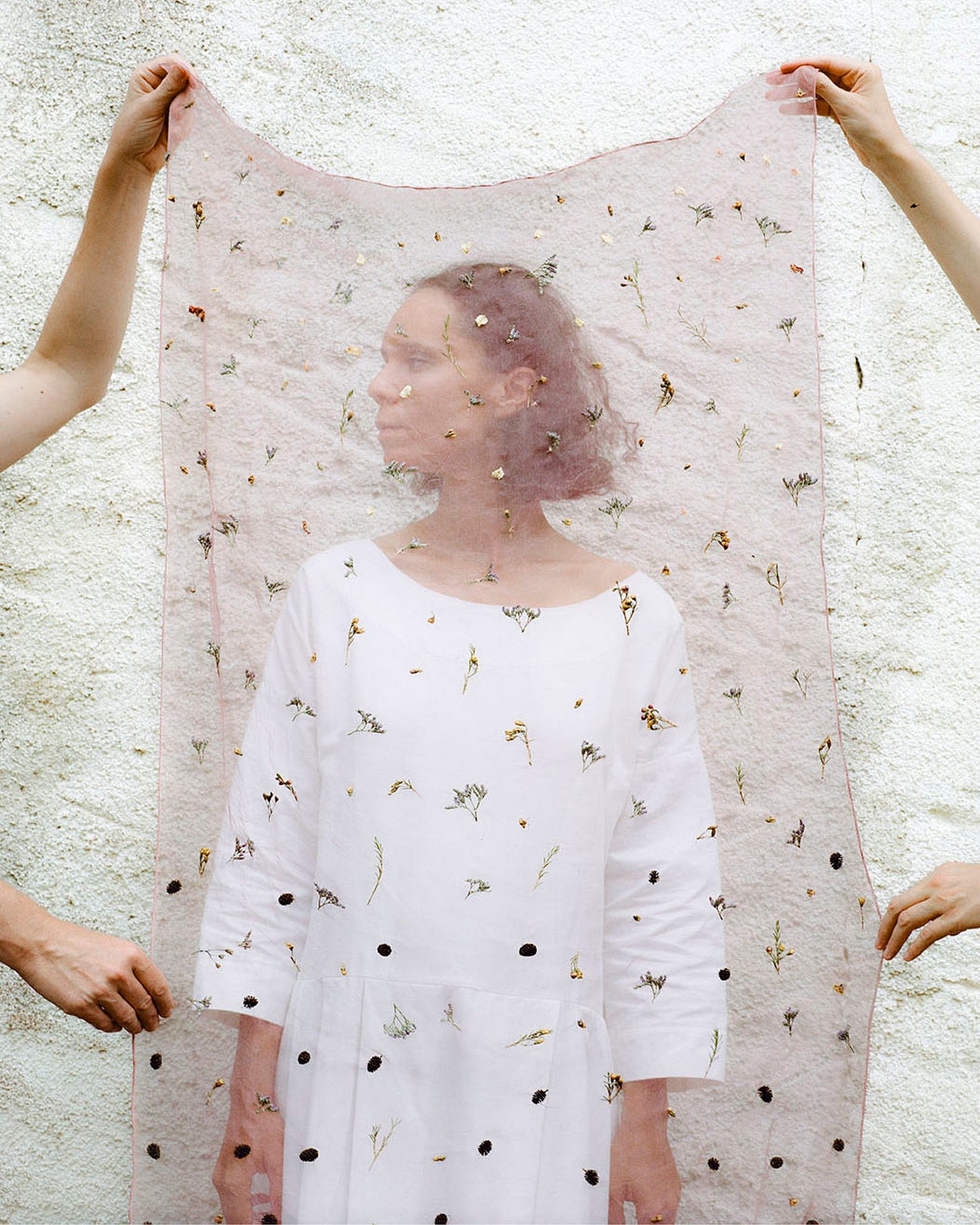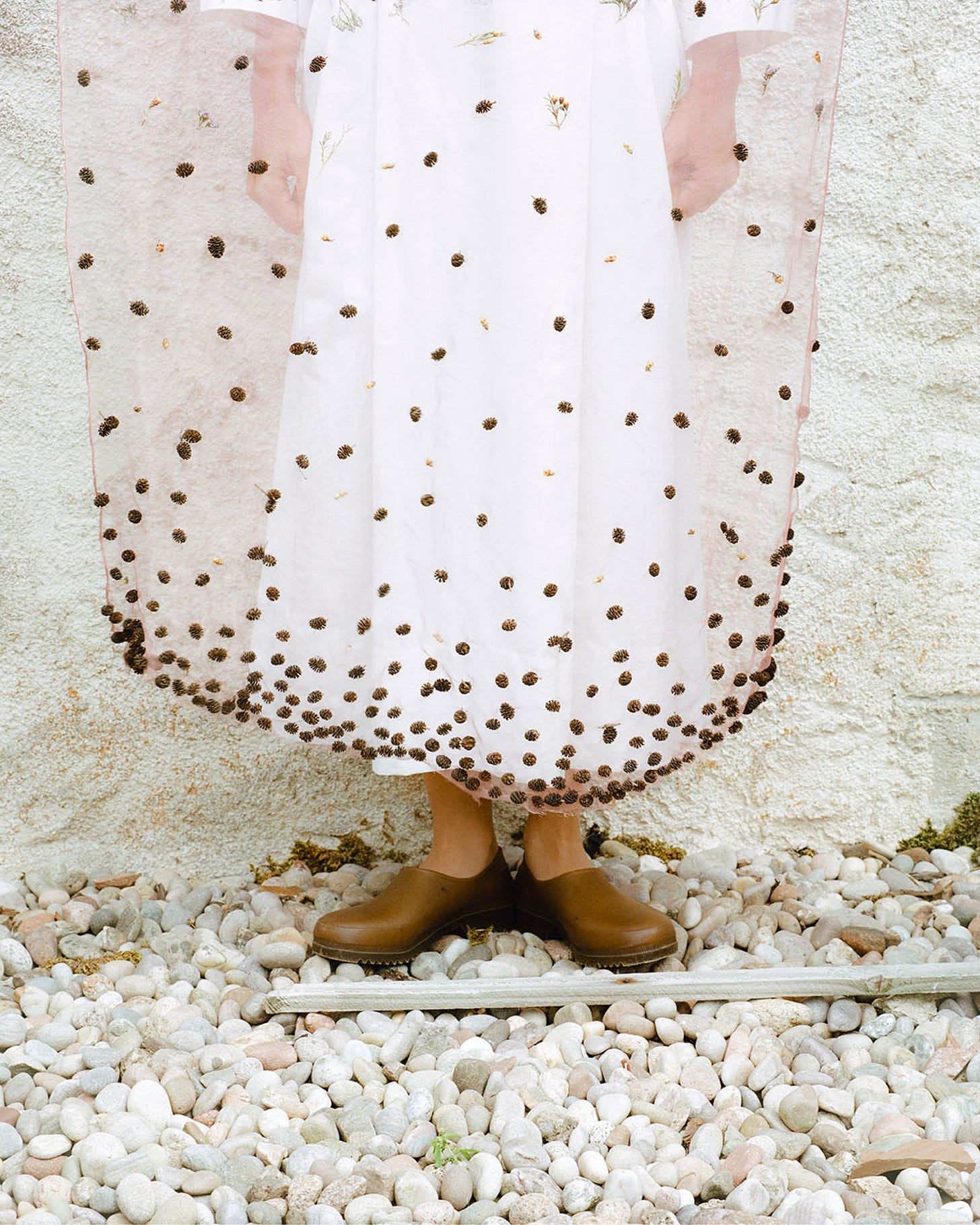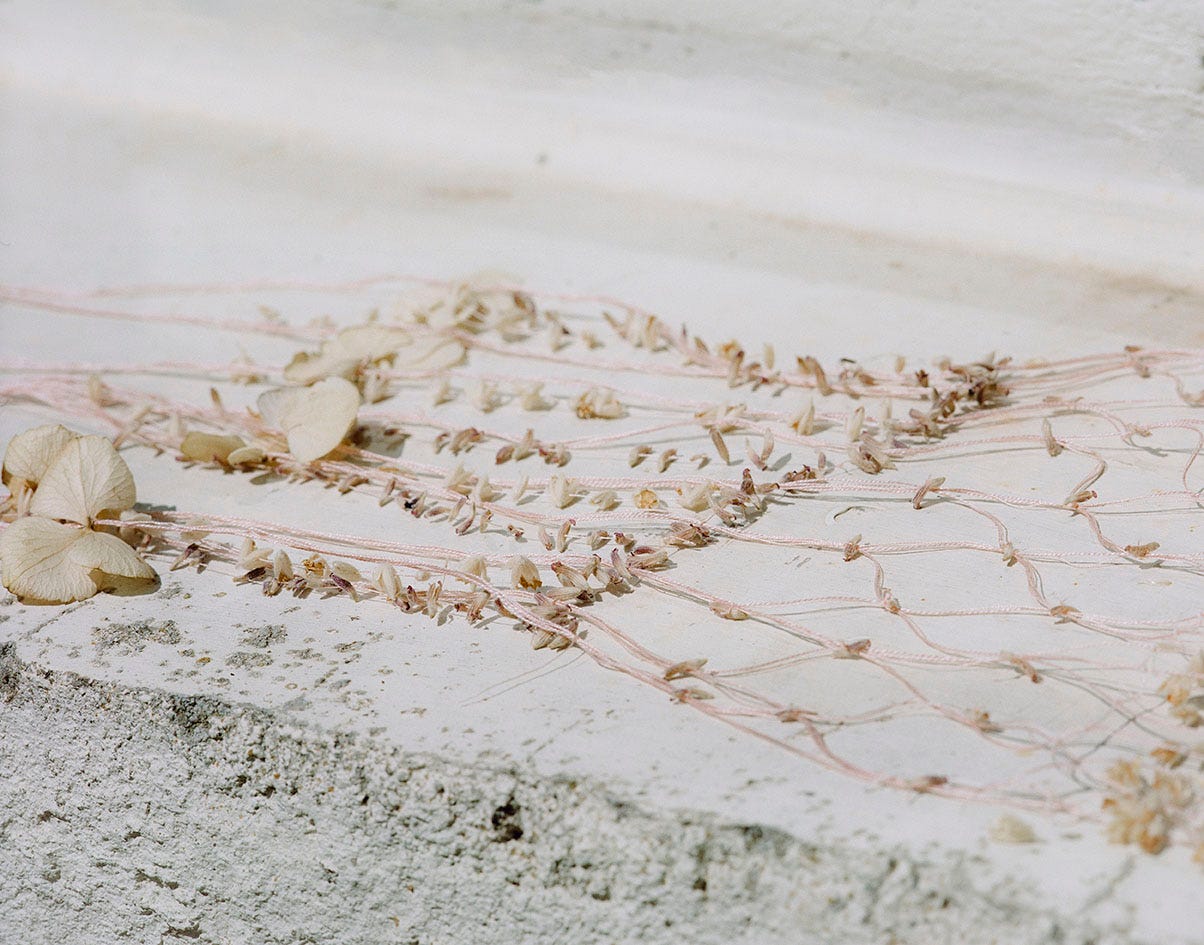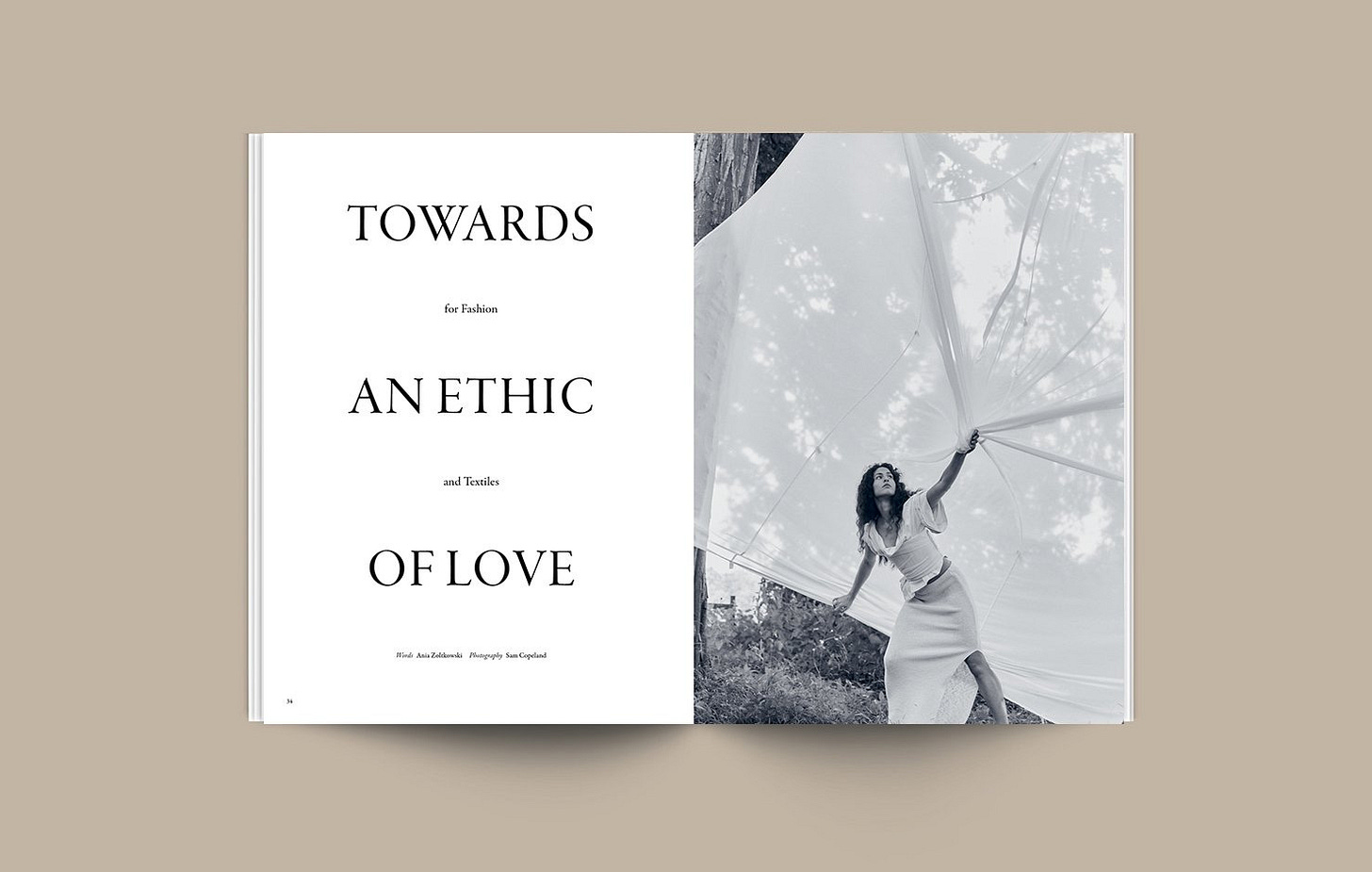Dancing Through Life
Reclaiming the impractical and meandering as a tool of discovery
Here at the Lissome, we’ve been busy behind the scenes preparing our fifth print issue; embodying the inward, reflective, and industrious hibernation energy of winter. One question has echoed through our process: how? As Ram Dass says: “You can do it like it’s a great weight on you, or you can do it like it’s part of the dance.” Every action—no matter how mundane—can become a form of active meditation. And nearly everything we do or use contains within it the seeds of alternative possibilities.
Think of Google, a tool we use every single day, which has become shaped by advertising, profits and algorithmic machinations. While off the beaten path, there are alternative search engines, which can lead you down meandering journeys of curiosity and discovery. In a substack article on Folk Search Engines, Elan Ullendorff highlights Marginalia, amongst others, as modes of searching that take a very different form than what we have become accustomed to. It: “Prioritizes non-commercial content, has tools for both search and discovery, and allows you to find lost old websites”. These are digital landscapes that reward wandering.
These quiet detours—whether through forgotten websites or untrodden paths—mirror the kind of wandering we find so vital in the creative process. It’s in this spirit of deviation and attentiveness that we return to our conversation with the ephemeral Katerina Knight, a textile artist originally featured in The Book of Kin. Katerina uses plant material in a completely new, sensual and dare we say ‘impractical’ way. It’s this very impracticality, or inefficiency that we are so captivated by. Like following the meandering curves of a river, instead of a cut path: you can choose to follow the water as it curves, loops, and winds—shaped by the land, not efficiency. When we make, use, or consume something differently, we open space to question its meaning in our lives. Katerina’s work does just that—offering a poetic vision of what textiles can become when nature is welcomed as a collaborator in their creation and use. Along with the interview, we’re sharing some things we’re watching and reading, as well as the magical work of jeweller Matilde Mozzanega.
Three Things We’re Loving:
This Youtube channel, with hundreds and hundreds of videos around the world, dedicated to small footprint living and thoughtful design. We’re constantly inspired by the ingenuity, and seeing people living richly and very beautifully with very little inspires and opens us up to new possibilities.
The Art of Frugal Hedonism: A guide to spending less while enjoying everything more
Written by Annie Raser-Rowland and Adam Grubb, this sweet book gives both conceptual say and meaningful small steps towards living frugally.
Available to stream on Netflix and Max, this sci-fi animated series is a beautiful and poetic exploration of an alien planet, which displays unusual complexity, symbiotic levels and extraordinary life cycles.
THE BOOK OF KIN presents:
Matilde Mozzanega
Based in: UK
Jewellery designer Matilde Mozzanega explores the relationship between personal adornments, self-care, healing and wellness – a modern take on the ancient tradition of jewellery worn as healing talismans. As a classically trained jeweller, a graduate of Central Saint Martins and recent resident at the Sarabande Foundation, she brings conceptual depth to traditional craft, working closely with artisans and goldsmiths in Valenza, Italy. Her approach is grounded in both material integrity and energetic intention: each piece is made from high-quality, ethically sourced materials and features healing gemstones, chosen for their symbolic and therapeutic properties.
Her latest capsule, Pepita Butterfly, was created in collaboration with digital artist ScorpionSorbet during a time of deep personal transformation – her journey into motherhood. Crafted with recycled silver, pink sapphires, and gold vermeil, the butterfly became a guiding symbol: delicate yet powerful, graceful yet resilient. Like spring emerging from the quiet hush of winter, this capsule is a soft, shimmering celebration of rebirth, renewal, and feminine strength.
https://matildemozzanega.com
@matildemozzanega
Tracing Ephemeral Threads
Katerina Knight’s Craft as a Pathway to Healing
Words and interview by Liz McLellan
What would it look like if our relationship to the material world was unmoored from the need for permanence? What if we could let go, and embrace the cycles that guide and shape our lives from beginning to end? Katerina Knight’s ephemeral silk and lace embroidery captures the beauty of materials that, unlike Gore-Tex, will decompose right back into the ground they came from. The artworks-cum-garments gently remind us of death, like a tendril of long swaying grass nudging your hand in a gentle breeze.

Light as air, yet grounded in the earth. Katerina’s patient process oscillates between a garden in the country and the bustle of London. Both polarities inform her practice, gleaning active inspiration and criticality from city life, and grounded presence from the countryside. She works with ancient craft techniques and contemporary critical thinking frameworks, bridging past and present. She’s also somewhere in between a craftsperson and an artist, never fixing herself into one category, but walking the thin silken thread between the two. Interstitiality is, however, perhaps the common thread of her work; rural vs urban, past vs present, craft vs art – she refuses to neatly fall into one category, and uses that tension to create something truly profound.
Within this fissure, healing emerges as the paradigm around which both the practice and the product revolve. Katerina fosters a space where doing and creating by hand is a form of alternative therapy. When she stepped away from the mainstream fashion world and took time to get in touch with her own rhythms, her practice emerged along with her sense of wellbeing. Redefining textile production through slow, thoughtful, caring work and community engagement has the potential to radically reshape our relationship to the material world, and bring us into close connection with the immaterial world of emotions, desires and aspirations that shapes it. Katerina’s work reminds us of this vibrant and compelling possibility.
Q: How did your practice begin? How has it evolved over time, and what has influenced its evolution?
A: I did my BA at Glasgow School of Art, where I was training in print and textile design. The textile education I had at that point was more commercial and less artistic, so I left Glasgow. I’ve always had an interest in fashion, then started doing internships and working with different brands in London. I worked for a brand called Renli Su and a tailoring brand, then I went and worked for Acne in Stockholm. There was no let-up, I went from one assistant job to the next, trying to manage my own work on the side. I gradually found myself losing my sense of practice and what I believe in. Particularly when I was working at Acne, the structures that were in place weren’t what I believed in. This was also during the pandemic, which was a time when the world had stopped. Fashion could rebuild these systems and structures and change things, but they didn’t. Instead, I just watched more people get fired, increasing others’ workloads, and it became more stressful. I felt I was getting trapped in a system where I was looking at people in these high-up design positions that I was supposed to be aspiring to – and thinking “I don’t want this, so what am I doing in this system?” I felt like to be a part of that, you had to disconnect.
My practice is so personal, and in doing that job I disconnected from myself. Luckily I noticed this early, and was able to pull myself out of it and reflect on what I wanted. I took a period of time and went back to my parents’ place in the countryside. I needed the time for reflection, rehabilitation, and healing from the system. I also got into my master’s at this point, so I took a pause. This coincided with my parents getting an allotment. I was in this empty space; a time where I could connect to myself again. I connected with nature, understanding the cycles and seasonality of things. For me it was all about coming back to being present, re-establishing these systems of care for myself and my environment. I didn’t want to be producing in the same way, I wanted to be slow and careful, and able to have this connection between myself and my making. Now I make everything by hand, using artisanal processes, using materials I home grow or collect and forage. I do a lot of hand needle lace, working with the Lace Guild (a museum and lace archive in the UK). They’re all charity-run, and rely on volunteers, which is an ageing craft community. So linking that back to current craft and textiles is very important to me. Then a lot of hand embroidery: it’s just me with my hands in my studio. There is a real intimacy there. It’s personally healing for me, and during my master’s it’s been about leaning into that, but also figuring out how to share that with others to create a space where they can heal as well.
Q: Are there particular frameworks or theories that frame your practice, or writing that inspires you?
A: I don’t have a strong spiritual practice, but I bring spiritual and philosophical thinking into my practice. The work of Joanna Macy is really prevalent in my practice. I reference a lot of female artists; Ana Mendieta. This relationship between the earth and the body is really important to me. Not just reading the works of others, but through my own writing as well: I find writing goes hand in hand with making. It feeds this organic rhythm of my practice.
Q: Your work is so delicate, ephemeral and plant based – it can easily decompose and change over time, falling back into the cycles of nature. This brings up a feeling of connection to the cycles of life and death.
A: In Western culture this idea of death is a morbid and sad thing, and it doesn’t have to be that way. For me it’s been empowering to understand that everything is temporary. Even when you go through moments of difficulty and illness, even that is temporary, and part of a growing process. That’s hard when you put that in the context of a material object: when it becomes temporary does its value diminish? It’s about getting people to reframe the way they think about these things. Yes, the things I make are not going to last forever, I actually have no idea how long they’re going to last. I’m asking the person to be present with that, and care for its beauty, but that doesn’t need to be forever.
Q: So much of our relationship to the material world is based around this need and desire for permanence. There’s such a beauty in shifting that perspective and getting people to have a relationship to clothing, objects and the physical world that brings them into acceptance of the impermanence of our lives and the things around us.
A: Yes, which conflicts with fashion: things needing to be the same, and quality control. Coming away from this idea of control, and learning to be more free with things. This is something I’ve learnt I needed to do with myself as well. The way that I make informs an alternative therapy toolkit for how I can feel better connected to myself. Then, trying to share that with others.
Q: Do you conceive of the pieces as clothing, or more art pieces? That distinction between the two is interesting, and seems to hinge on functionality. Is this tension something you explore in your work?
A: Yeah, that’s a tension I often feel in my mind; “I should know exactly what this needs to be for.” That’s also been a learning process for me, learning that the pieces can speak to different people in different ways. A large part of my work is storytelling, so it’s really about me working with the individual. I’ve worked with performers and musicians. Obviously those pieces needed to be wearable, so there needs to be a level of design to make them wearable. A lot of the current work I’ve been doing with dried florals sits more in a gallery space. But I’ve also been collaborating with a photographer, Ruby Blueheart, who photographs for Alexander McQueen. Working on these artefacts in a natural environment plays on that border between fashion and art, and finding that space where my work sits. It’s really about keeping it individual, and creating something that works for them. When I create my own pieces I’m much more free with it. I see the way I make as a series of projects – sometimes it’s more functional, and sometimes less. That keeps me feeling creatively engaged. It feels like my practice is evolving.

Q: It’s interesting to think about societal conceptions of the artist and the craftsperson. The people who produce clothing now are mostly in factories. There have been such vast changes in modes of production, and the ensuing roles and statuses in society. Craft is an interesting and beautiful category, which combines being a person who makes something and being an artist.
A: Craft within a factory context is the people on the sewing machines earning minimum wage. Those skills are not valued. I grew up in the Black Country [in England’s Midlands], which is very industrial and has a history of very laborious handwork. People there would say that they don’t know anything about art, but it’s not true: they’re doing something very skilled with their hands. It’s taken me being removed from that context, getting an education and having my own experiences to understand the real value those skills have.
Q: A lot of the techniques that you work with are not very common skills. You said that you’re working with the Lace Guild; are there other ways that those traditional techniques were imparted to you?
A: To be honest, I’ve found from my arts education that if you want to learn a technique you have to do it yourself. Whilst I’m referencing these old techniques, I don’t take for granted that I’m a contemporary maker who has access to all these digital realms. I can connect with and learn all these processes through a digital space. When I’m writing I get to speak with artisans. For example, I got to interview a hand dyer in Mexico; this sharing of knowledge would not have been possible when some of these processes were traditional crafts. So it’s finding this balance between bringing these traditional crafts into a contemporary context, and knowing and understanding their history.
Q: I’m curious to touch more on the idea of healing you spoke about before. How is your work a practice of healing? Do you have other practices that feed into that process?
A: The journey I had with healing started with leaving fashion, where I felt very disconnected from myself. I was in a bad place personally and quite physically ill, so I needed to go through my own physical and mental healing. I didn’t feel like I was connecting with forms of therapy that were accessible to me. Spending time doing repetitive tasks, hand sewing or going to the allotment and weeding felt very manageable to me, and very consuming. Slowly, I found through doing this I was learning to feel out these feelings and be present. Through the slowness that I allowed for my making, I realized it’s okay to invite that slowness into healing as well. Healing takes time, presence and patience and it can’t be rushed. Doing that with my making, alongside being with nature, allowed me to see how if I put the time into nature, it will nurture and heal me back. It’s been an alternative mode of therapy for me. I know time is a privilege and not everyone has it, but these simple processes, hand stitching, gardening etc., are very accessible.
Q: The concept of “retail therapy” has become so normalized: we live in a culture where consumption of clothing and objects is a form of therapy. It is used for both soothing and avoidance, and to fill certain spaces in our lives. I think those spaces are where people are missing a real sense of connection. It’s interesting to flip that on its head, and build a relationship with the material world in a way that is truly healing: a force of connection, instead of disconnection and alienation.
A: Yes, it’s a quick fix, and that’s what it’s been marketed as. Sold as a world: if you buy this piece you’re buying into this world, it will fill your life with all this beauty. But once you’ve been on the inside of the industry, the reality looks so different. Once you’ve seen it you can’t unsee, you can only switch it off. For me that meant switching off other parts of myself, which I wasn’t okay with doing.
Q: Do you have an idea of what this healing could look like on a systemic level? What structural changes need to take place for people to have a more loving, connected relationship to their material world, and to each other?
A: My master’s is just coming to an end, and I’ve created a big body of work. I’m in the process of taking a break from the making side. Now I’m doing more writing and work within education. I think the education space is really important. People having conversations about healing is happening more now, but not everyone has the tools. I’m looking at the ways I can start to create these healing circles. There’s a lot of craft workshops, but how can healing be integrated in a way that makes it not a luxury? Particularly in fashion, brands push this message that you can buy healing: “Buy this lavender oil and it will relax you.” I can make luxury expensive pieces, but the process of my practice speaks to a different circle.
Q: It’s challenging, the balance between luxury and accessibility. It would be wonderful if our structures could move in a direction where we’re incentivized to invest in one piece that we’re connected to, as opposed to many discardable ones. The whole process becomes more personal and connected: to the people and materials. Have you struggled with pricing? The balance of accessibility and valuing your time as an artist?

A: In the past I’ve not valued my time, and now I’ve had to create boundaries for myself and value my time. I’m working with materials that I’ve home grown: maybe this is from a pack of seeds that cost nothing, but it took me years to create the crop of lavender that I can now dye from. So it’s about understanding the value in that time. Pricing is an ongoing issue, but then it’s just about having conversations with people and getting them to understand the value of things. I don’t think the solution is for artists to bring down prices, it’s for people to change the way they’re consuming. Maybe I just invest in this one piece, and it means a lot to me. It’s hard when you’re trying to make that happen amongst this mass-produced market you’re immersed in everywhere. In London, everyone’s just trying to keep up.
Q: Is there a direction you see your work going in?
A: I’ve been taking time to do more writing now. I hope to be collaborating with more artists and performers on one-of-a-kind custom pieces. My work is a series of ongoing projects, and I feel good about that. It doesn’t need to be a brand: my practice as a maker is the brand.
Discover more about Katerina’s work and approach to craftsmanship at www.katerinaknight.co.uk.
Photography by Leonie Sinden, styling by Dörte de Jesus, dress by Mila Burcikova, muse Mélissa Wago-lala.
We hope you’re stepping into spring with a renewed sense of vitality, and the quiet inspiration to move through your days with attention, presence, and love. May the season's unfolding invite slowness where it’s needed, and momentum where it’s welcome.
Stay tuned for the forthcoming print edition of The Lissome, where we’ll delve deeper into the themes and textures we’ve been gathering over the winter months. And in next month’s Substack, we’ll offer a glimpse behind the scenes—into the rhythms, conversations, and inspirations that are shaping this issue as it comes into being.
Get your Copy of The Lissome
We still have a few print copies left of The Lissome No. 3: Cosmic Commons, The Lissome No. 4: Love Ethic and The Book of Kin, Guidebook of Slow Fashion Makers and Designers. They are available in our online shop, as well as their digital counterparts.
Until then, thank you for being with us on the journey.
Much love and see you next month,
Liz and The Lissome team xx










I really enjoyed this article. I am healing after a few difficult years and have returned to my creativity. Part of the reason for this return to embroidery and painting is down to necessity. I moved from the UK to live on a small island where there are no bookshops, clothes shops and coffee shops. I realised I was using these as a quick fix to feeling better and when they were not available to me I floundered. I had a tapestry that I was working on and when it finished I thought what next. And I was drawn to embroidery. I am doing an online course with The Fabled Thread and it is wonderful. I am now back to sketching, researching, and sewing. And I am healing. 💛🪡
Reward wandering 🤍